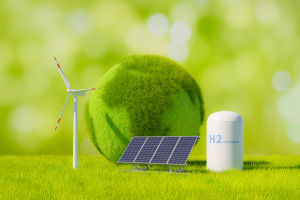It sounds like a fantasy: stepping into a warm greenhouse in Iceland, surrounded by banana trees and tomatoes while snow falls outside. Yet this is real life on the volcanic island sitting just below the Arctic Circle.
Here, heat from deep inside the earth makes it possible to grow tropical crops in one of the coldest places on the planet.
The Secret Beneath Iceland's Feet
Iceland sits on a natural energy source. The island lies between two tectonic plates, making it one of the most geothermally active places on Earth. Steam vents, geysers, and hot springs cover the landscape, offering a constant source of renewable heat. Instead of letting it escape, Icelanders have learned to use this underground power to heat homes, produce electricity, and—most surprisingly—grow food.
Greenhouses powered by volcanoes. In towns like Hveragerði, often called the "Greenhouse Village," geothermal heat warms giant glass domes filled with bananas, tomatoes, and coffee plants. Pipes carry hot steam from underground reservoirs directly into the greenhouse systems, maintaining a steady indoor climate of around 25°C even during snowstorms.
Light powered by clean energy. Since Iceland's winter days are short, LED lamps powered by geothermal electricity provide plants with the light they need to photosynthesize. This blend of natural heat and artificial sunlight creates a tropical microclimate in the Arctic.
Turning Heat into Harvest
Every drop of heat is reused. Geothermal systems in Iceland work like closed loops. Water heated deep underground first spins turbines to make electricity. Instead of being discarded, the leftover hot water is then piped into greenhouses to warm floors and air systems. Nothing is wasted.
Smart design means less waste. Inside these greenhouses, engineers use closed humidity systems where moisture from the plants condenses on the glass, gets collected, and is reused for irrigation. It saves both energy and water, especially important in isolated areas.
Clean crops, no chemicals. Since the environment is sealed and controlled, pests rarely get in. Farmers use natural solutions like ladybugs for pest control instead of chemical sprays. The result: vegetables that are both fresh and chemical-free.
Bananas in the Arctic?
Yes, it's real—just not for sale. Iceland once ran several geothermal banana greenhouses. Today, only one remains, managed by the Agricultural University of Iceland for research. Though not commercially produced, these bananas show what's possible when technology meets nature's energy.
Tomatoes take the spotlight. At places like Friðheimar in Reykholt, geothermal tomato farms thrive year-round. Visitors can dine inside the greenhouse, watching bees pollinate the plants while tasting tomato soup made from that morning's harvest. It's a beautiful example of science meeting sustainability.
Beyond food—an experience. These greenhouses have become tourist attractions. People come not only to taste the produce but to experience warmth and life amid Iceland's snowy landscapes. The success of geothermal farming has turned agriculture into a form of cultural storytelling.
Lessons for a Warming World
Local energy, local food. By relying on the earth's natural heat, Iceland reduces both fuel use and imports. This creates a sustainable food system that can inspire other regions facing cold or unpredictable climates.
Closed-loop thinking. The geothermal model shows how recycling energy and resources—heat, water, and even light—can build a more resilient future for agriculture. It's not just about what we grow, but how intelligently we grow it.
Innovation born from challenge. Instead of fighting their harsh environment, Icelanders embraced it. Their willingness to experiment—using volcanoes to grow tropical fruit—proves that creativity and sustainability can go hand in hand.
A Warm Thought to End On
Beneath Iceland's icy surface, the earth's heartbeat keeps glowing. That same heat powers lights, warms homes, and nurtures plants that shouldn't survive so far north. It's a reminder that solutions to our biggest problems often lie right under our feet—waiting for someone curious enough to turn steam into sweetness.

